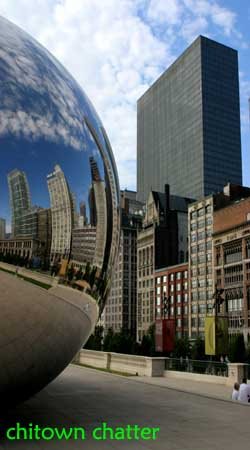
This is a young city, where buildings are considered aged at 20 years (compare that to my house in MA which was built in 1893). And recession be damned, this is a growing city, with last week's unveiling of City Center and an additional 4,000 new hotel rooms. The Strip is slated to double in size in the next couple decades, stretching south to reach the M resort.
Water conservation is a major issue, and houses are allotted a certain amount of water usage annually. Or you can drill private wells. The tap water here does not taste very good; Lake Michigan is better by far, and the Finger Lakes top that. If you destroy your lawn by covering it with gravel or sand, you can get compensation from the government by sending in photographic evidence. Housing and land are cheap and plentiful, which makes the city surprisingly car friendly and conversely, pedestrian unfriendly. Parking on the strip is generally free at casino lots, and free with validation downtown. I can't think of another urban center that boasts free parking. There is no subway system (other than the Strip lightrail), but the bus system seems fairly extensive. Walking down the Strip is a slow process due to crowded sidewalks and the overhead crosswalk system. Each time you cross a street, you have to climb up and down a flight of stairs (or take the escalator). The streets are laid out on an imperfect grid system similar to Chicago's, with 8 blocks to a mile, and the Strip dividing addresses east and west. Avoid driving on the Strip whenever possible; it can take over an hour to traverse the four miles. However you can travel 60 or 70 blocks in just 10-15 minutes if you head away from the Strip.
There is a vibrant "Chinatown" just a couple miles west of the Strip, a series of shopping plazas and storefronts along Spring Mountain Road. I found it quite diverse compared to other asian enclaves, which are generally dominated by one ethnicity. In this two mile stretch though, there are strong Korean, Japanese, Vietnamese and Filipino offerings. Prices are low, possibly due to the proximity to CA. For a dollar, you can pick up 12 heads of garlic, a pound of tilapia or 3 pounds of limes. Restaurants are abundant and many are cash only. The pho I had here was just okay, but the duck feet and reindeer were excellent.
Las Vegas must be the only city in the world which characterizes itself by imitating other cities. In the four miles of the Strip, you will pass a mock Eiffel Tower, the Statue of Liberty, Venetian gondolas, an Egyptian pyramid, Roman columns and a medieval castle. And in case that's not enough to grab your attention, you can watch an exploding volcano outside of the Mirage (colored water and lights set to music) and scantily clad bucaneers at the Treasure Island pirate show. I was warned that this was NOT family friendly, but opted to drag the crew there anyway for maximum hilarity. Unfortunately, it is currently closed for the winter.
I didn't take any of the prostie cards that they pass out on the Strip (figured they might be infectious), but Steven and Stanley grabbed them by the dozen (for Irony, I imagine). Having collected about fifty or so, they then decided to try standing on a corner and passing them out. This was rather unsuccessful. Then Stanley tried to drop one into a homeless guy's hat, and the homeless guy got mad and started yelling after him, "Boy! Leave me alone!"






























































